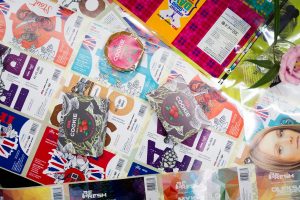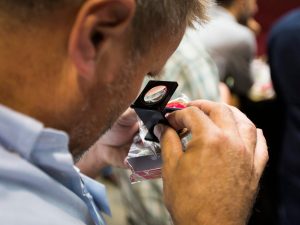Dr. Flexo turns Judge Flexo in FTA Printing Competition
It’s that time of year again – FTA’s Excellence in Flexography Awards is currently accepting submissions from all flexographic printers, converters, buyers, designers, suppliers and students ready to show off their best work.

Lucky for all of those considering submitting their prized work in the competition, our very own Dr. Flexo has been tapped to judge this year’s feat (for the sixth time!) and has offered up his recommendations on standing out. Here is Bill Enright’s perspective on the upcoming contest:
What does it take to win a printing competition? It really starts with the entrant having a keen eye for detail and going back to the “basics” of printing while keeping the mindset that this is a “printing competition”.
As a judge of these events, we are required to review all the submitted entries in the allocated amount of time that has been set in advance of the competition. What does this mean? Simply take the judging time allotted and divide this by the number of entries. This gives us a cadence that we must use in order to complete the judging in the allocated time. This cadence normally allows us 3-5 minutes to spend on each submission.

Most of these printing competitions break the judging into two parts:
- How well was it printed?
- How difficult was it to produce?
At the end of the day, the submissions that win awards are the submissions in which the entrant has paid close attention to the aforementioned “basics”.
Follow the rules of the competition
Provide the number of printed images as outlined in the contest rules. If you are submitting individual pieces or sheeted product, I would also suggest including a continuous section of the printed web prior to diecutting so that consistency and registration can be checked by the judges.
Registration
All printed repeats need to be in perfect registration!
Ink Coverage
Solids and trap areas will be evaluated for smooth, complete coverages. Ink pin-holing and areas of poor or inconsistent ink coverage will result in point deductions.
Image Sharpness
Pay particular attention to your plate impression. The judges are looking for the printing to be sharp with no areas of over impression. The judges are also eyeing the clarity of printing, paying particular attention to clean and sharp printed edges. Printing with excessive impression or ink laydown, fill-in, squeeze, spots, hairs, waviness or any other printing defects observed will result in point deductions.
Dot/Screen/Vignette Quality
Screen and process areas will for reviewed for printed “dot” quality. The judges are looking at the physical printed quality of the screen dots. Dot drop off, dot bridging, moiré or missing or dirty dots will result in point deductions.
Consistency
The judges are looking for consistency throughout the image as well as the consistency of all previously judged variables throughout the image as well as consistency throughout all the submitted samples.
Proof of Job
When possible provide a proof of the job to accompany the “submitted samples.” In some competitions, the proof or layout will add bonus points to your score. If the samples accurately match the target proof, additional bonus points may be awarded by the judges. These small bonus points may make all the difference in getting an award.
Difficulty
After looking at the key “basic” attributes above, we would then look at the degree of difficulty and factor a score based on the degree of difficulty.
Submit Technical Data
Please do not fail to complete the “Additional Technical Information or Technical Data portion” of the contest entry. As experienced judges, we can normally pick apart the submitted samples and derive how it was produced. But as these constructions become more and more complex, the entrant is really doing themselves a disservice by not outlining everything that went into the construction of the sample entered. As judges, we would certainly like to give you recognition where warranted for additional complexity or additional processes which add to the complexity of your submission.
Inspect, Inspect, Inspect!
The last recommendation that I would make is to inspect your samples with a 10x or 12x loupe. Using a higher magnification loupe to inspect your printed samples will help you see “things” that will just not show up under a 5x, 6x or even 8x loupe.
.jpg)
Please remember that “we” judges perform our judging services on a volunteer basis. I personally enjoy judging and feel that by volunteering my time and services that I am in some way giving back to an industry that has been very good to me. I also enjoy looking at your truly amazing printed submissions so please keep them coming!
About the Author
Dr. Flexo (Bill Enright, Senior Applications Engineer at Mark Andy) has been in the printing industry for over 30 years, serving in a variety of different roles from plate mounting to operations management. Bill has earned his doctorate in printing. Throughout the years, he’s learned the quality of a print job is only as good as the consumables that go into it.